Haring
£11.40£14.30 (-20%)
One of the key figures in the New York art world of the 1980s, Keith Haring (1958–1990) created a signature style that blended street art, graffiti, a Pop sensibility, and cartoon elements to unique, memorable effect. With thick black outlines, bright colors, and kinetic figures, his public (and occasionally illegal) interventions, sculptures, and works on canvas and paper have become instantly recognizable icons of 20th-century visual culture.
From his first chalk drawings in the New York City subway stations, to his renowned “Radiant Baby” symbol, and his commissions for Swatch Watch and Absolut Vodka, Haring’s work was both emblematic of the manic work ethic of 1980s New York, yet distinctive for its social awareness. Belying their bright, playful aesthetics, his pieces often tackled intensely controversial socio-political issues, including racism, capitalism, religious fundamentalism, and the increasing impact of AIDS on New York’s gay community, the latter foreshadowing his own death from the disease in 1990.
In this vivid introduction to Haring’s work, we explore the dynamic life and innovative spirit of this singular artist, who spent little more than a decade in the spotlight, but through the accessibility of his visual vocabulary and the strength of his political commitment became one of the most significant artists to emerge from New York’s vibrant, downtown community.
About the series
Born back in 1985, the Basic Art Series has evolved into the best-selling art book collection ever published. Each book in TASCHEN’s Basic Art series features:
a detailed chronological summary of the life and oeuvre of the artist, covering his or her cultural and historical importance
a concise biography
approximately 100 illustrations with explanatory captions
Read more
Additional information
| Publisher | TASCHEN, Illustrated edition (23 Jan. 2023) |
|---|---|
| Language | English |
| Hardcover | 96 pages |
| ISBN-10 | 383653049X |
| ISBN-13 | 978-3836530491 |
| Dimensions | 21.4 x 1.3 x 26.4 cm |

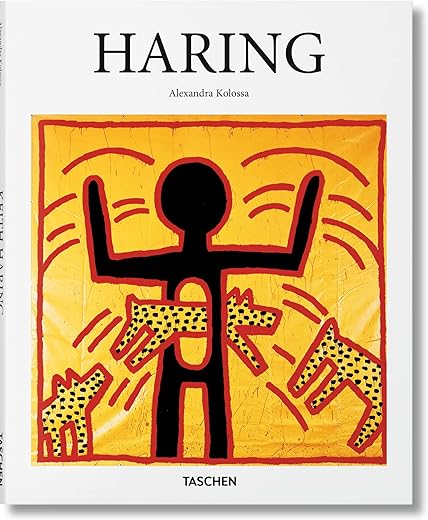
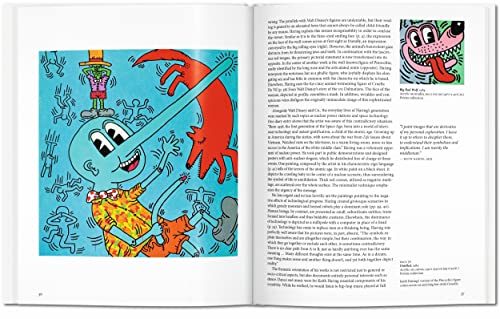
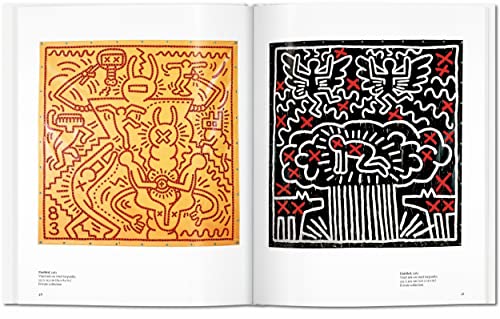
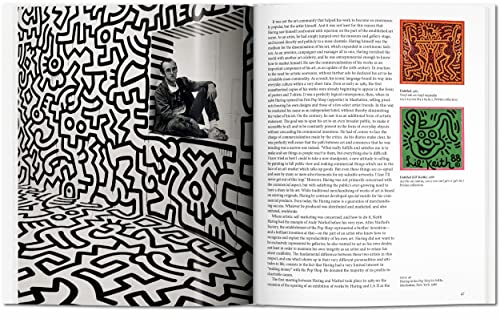




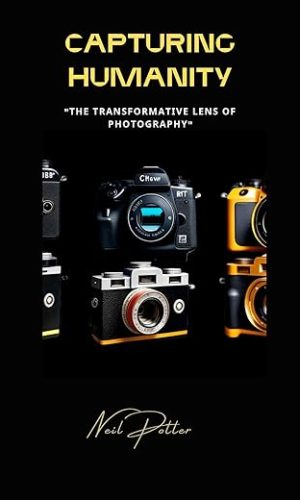
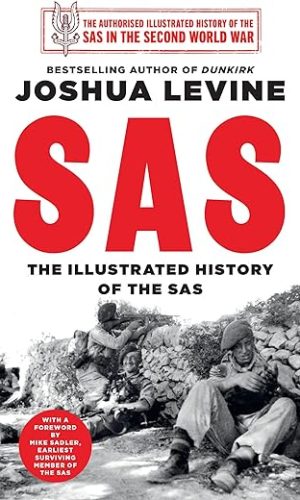
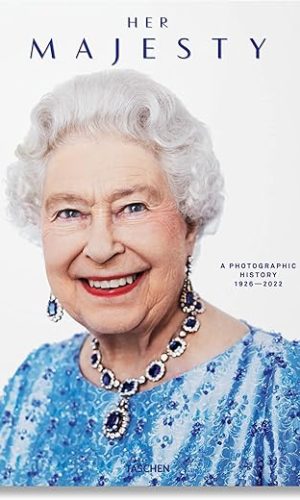
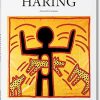
by Jenny
Fast delivery, great quality and will definitely buy again.
by Charles Bridges
Haring”s a true original with a unique style. What a pity his life was cut short by AIDS.
by Sean
Taschen edition looks like the best value. dependable
by Dr R
I am not sure whether I would have purchased this book, even though it is one of Taschen’s extraordinary 25th Anniversary Special Editions, reprinted in 2009. I always thought the artist’s work to be repetitious and contrived. Having been given this book, I am happy to admit that, in this case, my prejudice was confounded [although I have many more in reserve].
Keith Haring, 1958-1990, was born in Reading, Pennsylvania, moving to New York City in 1978, and began making chalk drawings on public surfaces and in subway stations. In `A life for art’, Alexandra Kolossa discusses the artist’s short life and artistic career in a series of illustrated chapters, `Art is life, life is art’, `How the baby learned to talk’, `Art, Commerce and Children’, `Sex and Crime’ and The Finale’. The book is completed with an illustrated Chronology and a Bibliography. The English translation is by Michael Scuffil.
The book contains 86 reproductions, almost all in full page colour plates and some spread across 2 facing pages. The illustration on the front cover is a detail from “Free South Africa”, 1985, for which Haring charged a nominal fee of $1 for a 20,000 print run, which puts the artist in very different position to, say, Warhol who made no secret of optimising the commercial return from his works. In addition, Haring donated much of the profits from his artworks to charity.
The earliest work is a felt-tip drawing, “Untitled”, in which, aged 16, he amassed a group of images, including rock group labels and cartoons, that were part of his life at that time. Haring’s mature early style is readily identifiable, a continuous line that spreads out in many directions within the area of the picture that was always the first to be drawn. The artist has said that he never knew beforehand what he was drawing, and was guided by chance, like the Surrealists, to the finished work. Although his figures and forms continuously developed, with new images being introduced within an overall stylistic evolution, there is no evidence of alterations or corrections to any work.
Much of this work was drawn on walls, buildings and the New York subway, especially on black panels awaiting the pasting of advertisements. Unlike graffiti artists who used spray paints and signed their work in a prominent manner, Haring used a pictogram as his signature. His works, drawn with chalk, were sometimes in the form of pictogram stories. The artist’s aim was to gain the approval of graffitists and for his work to be recognised by the public. Later he used tarpaulins as canvases because they could be easily hung. However, because he was operating outside the usual commercial art channels, at first he found it hard to have his work considered by most of the American art establishment and his work was accepted and shown first in galleries and museums in Europe. His acceptance in America only came later.
Haring involved the viewer in his art `The viewer creates the reality, the meaning, the conception of the piece. I am merely the middleman trying to bring ideas together’. Absence of communication was at the heart of his view that abstract painting was a dead end, with nothing to say to the viewer. In the mid-1980s the artist incorporated comic and film figures (“Big Bad Wolf”, and “Cruella De Vil”, both 1984), animals and characteristic motifs, often overtly sexual, into his works.
He produced brightly coloured sculptures such as “Julia”, and “Untitled (Capoeira Dancers)”, both 1987, and “Untitled (Head through Belly)”, 1987-88. A striking photograph is “Body Painting, Grace Jones”, 1984, in which the model wears a skirt and crown decorated with Haring motifs, designed by David Spada, and has been painted with white designs by the artist.
Whilst Haring had always been concerned with racial violence (“”Michael Stewart – USA for Africa”, 1985), drug abuse (“Crack Down!”, 1986), safe sex(“Safe Sex”, 1988) and AIDS (“AIDS”, 1985) and targeted much of his work against the virus, which he personified as horned sperm, this increased following his diagnosis of AIDS in 1988 (“Ignorance = Fear, Silence = Death”, “Silence = Death” and “Stop AIDS”, all 1989). His work, initially ambiguous or with sexual motifs hidden amongst complicated overall patterning now became blatant. In 1989, he created the Keith Haring Foundation to support children’s charities and organisations dedicated to raising AIDS awareness.
“A Pile of Crowns for John-Michel Basquiat”, 1988, shows the dead artist’s crown pictogram within a triangular area. In some of Haring’s later works, “Walking in the Rain”, “Brazil”, 1989, he uses thinned paint allowing it to run down and create a curtain between the viewer and the work itself.
In 1989, the artist completed a mural, “Tuttomondo” on the outer wall of the Church of Sant’Antonio in Pisa, that typically unites the sphere of every sphere of human activity. His last work, Untitled, was completed in November 1989, when his energy and enthusiasm were undiminished. It unites all of the artist’s characteristic technical experiments and is a very apt.
On the evidence presented here there is much to admire about Haring the man and artist.